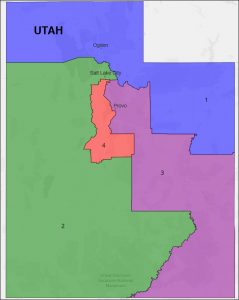By Jim Ellis — Tuesday, Feb. 20, 2024
President
Sen. Joe Manchin: No Presidential Run — After testing the political waters for a minor party presidential run, Sen. Joe Manchin (D-WV) over the weekend announced that he will not be pursuing a national candidacy. While not said, it is clear that the task of obtaining ballot position in enough states to be competitive proved daunting, and at this point in the cycle very unlikely to be achieved. Without a party label, it is extremely difficult, as even Robert F. Kennedy Jr. is finding, to qualify fully for the national campaign.Senate
Montana: Tester Up in Latest Senate Poll — Survey USA, polling for the NonStop Local organization (Feb. 12-15; 700 North Carolina adults; 612 registered North Carolina voters; 549 likely voters) tested the Montana electorate shortly after Rep. Matt Rosendale (R-Glendive) announced his short-lived Senate campaign. The results provided good news for Sen. Jon Tester (D), who faces the political winds in his face this year. Against both aerospace company CEO and retired Navy SEAL Tim Sheehy and Rosendale, Sen. Tester posted identical 49-40 percent leads. Earlier surveys found a much closer ballot test.
Rep. Rosendale’s abrupt exit from the Senate race virtually clears the GOP field for Sheehy, who already has the entire Republican state and national establishment backing his campaign. The Montana race is a top-tier GOP challenge contest and one of the states likely to determine which party will claim the Senate majority in the next Congress.
Texas: Senate Polls Bouncing Around — We’re already seeing very predictable Texas Senate polling. Recent polls have shown a tight race between Sen. Ted Cruz (R) and US Rep. Colin Allred (D-Dallas). It is expected that the various ballot tests will show a close contest all the way to election day, at which point Sen. Cruz will pull away and post a 5-plus point victory. Additionally, while Rep. Allred has been very successful on the fundraising front, he still must navigate through a contested Democratic primary that has a good chance of advancing into a runoff election.
The National Public Affairs Republican polling firm (Feb. 6-8; 807 likely Texas voters; live interview & text) is the latest to survey the Texas electorate. While the data produces a three point Republican advantage on the generic congressional question and former President Donald Trump tops President Joe Biden at 42-35 percent, the Senate race between Cruz and Allred finds the two tied at 44 percent apiece. Previously, we saw chronological polls giving Cruz a nine-point (YouGov), two-point (Emerson College), and six-point (YouGov) lead.
Governor
North Carolina: Open Gov Race a Dead Heat — Of the eleven 2024 gubernatorial campaigns on the ballot, the North Carolina contest is clearly the most competitive. With Gov. Roy Cooper (D) ineligible to seek a third term, it appears that Lt. Gov. Mark Robinson (R) and Attorney General Josh Stein (D) are headed to the general election.
East Carolina University just completed a poll of the state (Feb. 9-12; 1,207 registered North Carolina voters; Interactive Voice Response system) and posts Robinson to a 53-13-7 percent lead over attorney and former prosecutor Bill Graham and state Treasurer Dale Folwell in the Republican primary. On the Democratic side, AG Stein records a similarly strong 57-7 percent margin over retired state Supreme Court Judge Mike Morgan.
Turning to the general election, this polling universe yields a 41-41 percent tie between the two men. North Carolina typically features tight statewide races, and this open governor’s race appears to be consistent with such voter history.
States
Nevada: Redistricting Ballot Prop Rejected — Proponents of creating a redistricting commission were dealt a major setback at the end of last week. Two measures that would begin the process to remove redistricting power from the legislature and governor and create a citizens’ commission to draw maps can’t appear on the ballot this year according to a Nevada state court ruling. The ruling cited the Nevada statue stating ballot initiatives must demonstrate that adopting the measure will pay for itself. The redistricting commission proposition lacked such proof.
In Nevada, ballot measures must pass in consecutive elections in order to be adopted. Therefore, it appears this support group will have to wait until 2026 and 2028 to attempt qualifying the proposition since the latest court ruling will likely prohibit the supporters from obtaining the 102,362 valid petition signatures required for ballot qualification in this election year.






